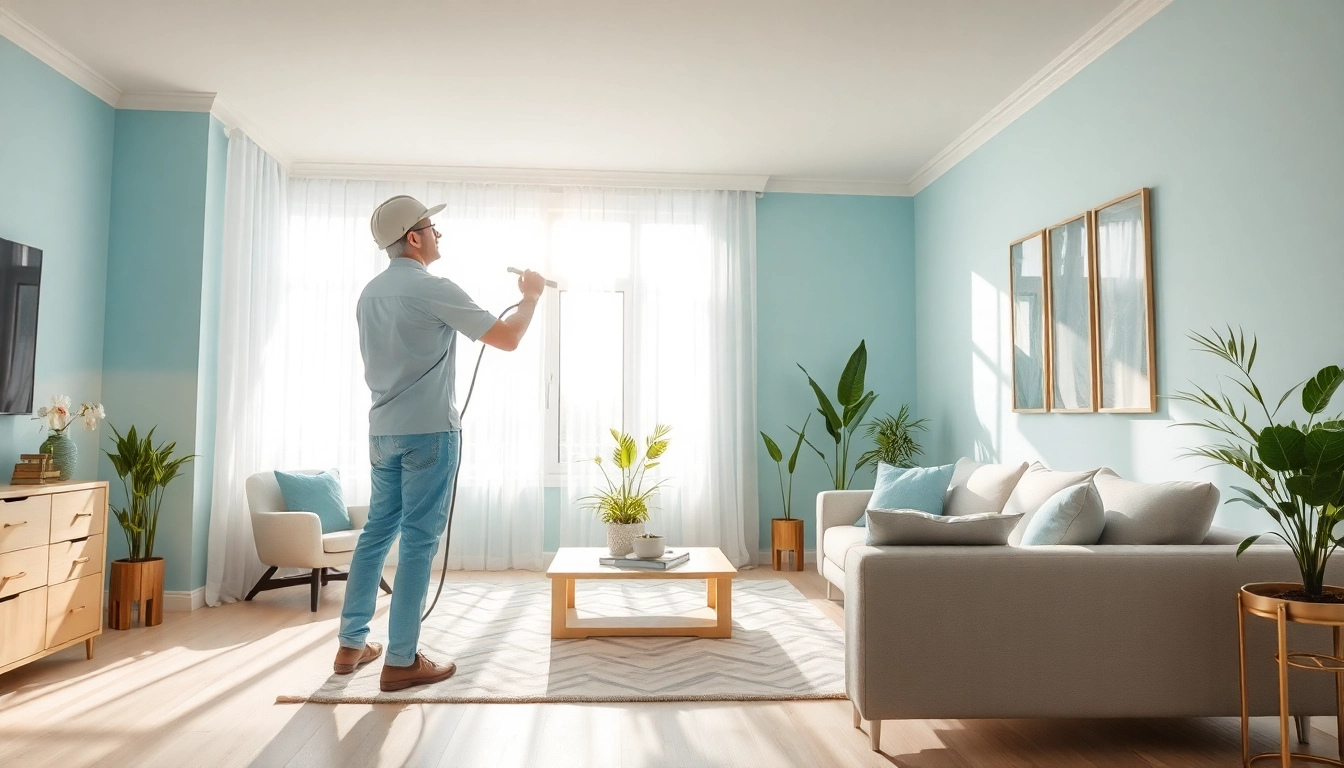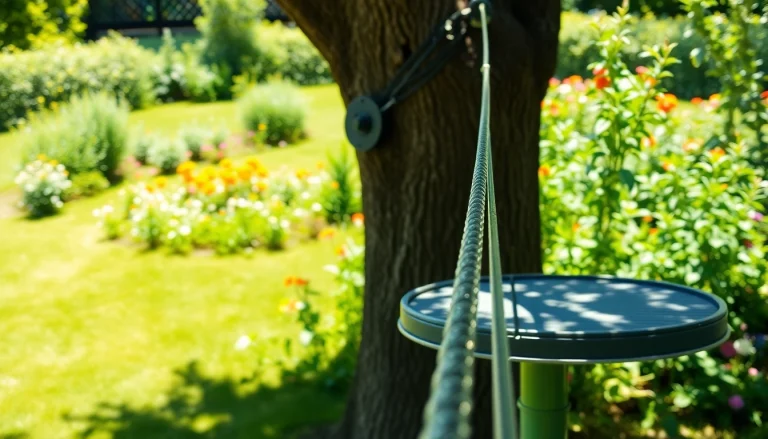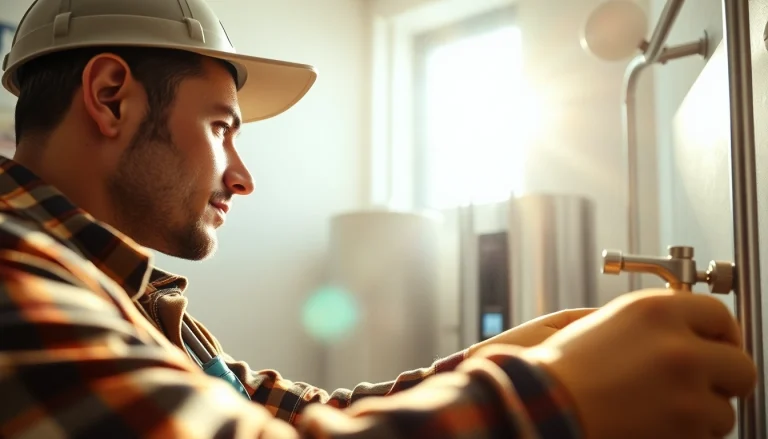
The Essentials of Interior Painting
Whether you’re refreshing a single room or undertaking a whole-house transformation, interior painting is one of the most impactful projects you can undertake in your home. It not only enhances the aesthetics but also adds value and breathes new life into your living spaces. In this comprehensive guide, we will explore the essential aspects of interior painting, from selecting the right paint to ensuring professional-quality results.
Understanding Paint Types: Which Is Best for You?
The world of paint can be overwhelming, particularly with the plethora of options available today. Understanding the types of paints is the first step in choosing the right one for your project. Here are the main categories:
- Water-Based Paints: Commonly referred to as latex paints, these are easy to clean up with soap and water, dry quickly, and have lower levels of volatile organic compounds (VOCs). They are ideal for indoor use due to their safety.
- Oil-Based Paints: Known for their durability and smooth finish, these paints are often used on surfaces that require a hard finish like trims and moldings. They take longer to dry and require solvents for cleanup.
- Specialty Paints: This category includes chalk paint, which gives a matte finish; elastomeric paint, which is thicker and used for covering exterior surfaces; and milk paint, a safe option used in environmentally conscious projects.
When selecting your paint, consider the finish as well. Options range from flat, which has no shine, to gloss, which reflects light. Satin and eggshell finishes fall in between, offering a slight sheen while still being easy to clean.
Preparing Your Space: Essential Steps Before You Begin
Preparation is crucial in any painting project. Properly prepping your space can significantly enhance the outcome and longevity of your paint job. Here are key steps to follow:
- Clear the Area: Remove furniture and cover any items that can’t be moved with drop cloths.
- Clean Surfaces: Dust and wash walls to ensure the paint adheres properly.
- Repair Imperfections: Patch holes, cracks, or dents with spackle. Sand the areas smooth once dry.
- Apply Primer: Primer can help paint adhere better and is especially important when transitioning from dark colors to light colors.
Tools of the Trade: Must-Have Equipment for Interior Painting
Having the right tools can save you time and ensure a professional finish. Essential tools include:
- Paint Brushes: Use high-quality brushes for cutting in and detail work.
- Rollers: Ideal for larger areas, rollers come in various nap lengths for different textures.
- Painter’s Tape: Essential for clean lines on trim, windows, and doorways.
- Drop Cloths: Protect your floors and furniture from paint splatters.
- Paint Tray: This tool holds paint for easy roller access.
- Extension Pole: Attach to your roller for ceilings and high walls.
Budgeting for Your Interior Painting Project
Budgeting is a critical aspect of any home improvement project. Interior painting costs can vary significantly based on various factors, including room size, paint type, and labor.
Estimating Costs: Average Expenses for Interior Painting
According to market data, the average cost to paint a room ranges from $1,800 to $10,000, depending on various factors:
| Room Type | Average Size (sq. ft.) | Average Cost (Labor Included) |
|---|---|---|
| Bathroom | 20 – 100 | $60 – $400 |
| Bedroom | 200 – 310 | $600 – $1,240 |
| Kitchen | 200 – 360 | $600 – $1,320 |
| Living Room | 300 – 400 | $900 – $1,600 |
Understanding Pricing Variations: Factors That Affect Cost
Several factors influence the cost of an interior painting project, including:
- Size of the Space: Larger rooms require more paint and labor, affecting the overall cost.
- Paint Quality: Higher-grade paints often cost more but offer better coverage and durability.
- Geographic Location: Prices may vary by region due to local market conditions.
- Preparation Work Needed: Extensive prep work, such as sanding and priming, can drive up costs.
Cost-Saving Tips and DIY Considerations
To keep costs under control while ensuring a quality finish, consider the following tips:
- DIY Approach: If you’re handy, painting yourself can save significantly on labor costs.
- Buy in Bulk: Purchasing paint in larger quantities often reduces the overall price per gallon.
- Choose Lower-Cost Paints for Non-Focal Areas: Save premium paints for high-visibility spots while using less expensive options elsewhere.
- Time Your Project: Consider painting during off-peak seasons when painters may offer discounts.
Choosing Colors and Finishes
The colors and finishes you select can transform the ambiance of your rooms. Understanding the psychology of color and the characteristics of paint finishes is essential for a successful interior painting project.
Color Theory Basics: Choosing the Right Palettes for Your Space
Color theory plays a crucial role in home aesthetics. Consider the following when selecting colors:
- Warm Colors: Reds, oranges, and yellows can create a vibrant and energetic atmosphere.
- Cool Colors: Blues and greens are calming, promoting tranquility in spaces like bedrooms and bathrooms.
- Neutral Colors: Greys, whites, and beiges create a versatile background, allowing furniture and decor to take center stage.
Personal preference and room functionality should guide your final choice.
Understanding Paint Finishes: Matte, Satin, and Gloss Explained
Choosing the right finish is as crucial as selecting the paint color:
- Flat/Matte: No shine, perfect for hiding flaws, ideal for ceilings.
- Satin: Soft sheen that withstands cleaning, perfect for living rooms and bedrooms.
- Eggshell: Slightly more reflective than satin, good for moderate traffic areas.
- Gloss/High-Gloss: Very shiny and durable, excellent for trim and high-traffic areas.
Trendy Color Combinations for Modern Interiors
Modern trends emphasize bold combinations and monochromatic palettes. Here are some inspiration sets to consider:
- Classic White and Grey: For a clean, minimalist aesthetic.
- Dark Blue and Copper: Adding warmth and elegance to contemporary spaces.
- Earthy Greens and Creams: Bringing nature indoors for a calming feel.
Advanced Techniques for Professional Results
While the fundamentals are crucial, advanced techniques can elevate your interior painting project significantly. Perfecting these skills may require practice but the results will be worth the effort.
Pro Tips for Crisp Edges and Clean Lines
Achieving sharp edges is often the difference between a good and great paint job. Here are some expert techniques:
- Use Painter’s Tape: Applying tape can provide crisp lines, but ensure it’s applied correctly and removed at the right time.
- Cutting In: This involves painting the edges with a brush before rolling. Use a steady hand to create neat lines along ceilings, corners, and moldings.
- Two-Coat Method: If you’re unsure about coverage, applying a second coat will help obscure any imperfections.
Using Primers and Sealers Effectively
A common mistake among DIYers is skipping primer. Here’s why it’s important:
- Enhances Adhesion: Primer creates a surface for the paint to bond better, enhancing durability.
- Improves Color Coverage: When transitioning colors or painting over stains, primer provides an even base.
- Sealers: Applying sealers can protect the final coat against wear and moisture, particularly in kitchens and bathrooms.
Common Mistakes to Avoid for a Flawless Finish
Even experienced painters make mistakes. Here are common pitfalls to avoid:
- Skipping Prep Work: Never underestimate the importance of thorough preparation.
- Poor Quality Tools: Investing in high-quality brushes and rollers can make a significant difference.
- Painting in Poor Lighting: Ensure ample lighting to see true colors and avoid missed spots.
Post-Painting Care and Maintenance
Once your painting project is complete, proper care and maintenance are critical for preserving your work’s quality.
How to Properly Clean and Care for Painted Surfaces
Maintaining your newly painted walls involves regular cleaning:
- Dust Regularly: Use a microfiber cloth to remove dust and dirt from painted surfaces.
- Spot Clean: Address stains immediately with a mild detergent and a sponge, always testing a small area first.
Identifying and Repairing Common Paint Issues
Be on the lookout for the following issues and how to address them:
- Peeling Paint: This often indicates poor preparation or moisture issues. Scrape off the affected areas and repaint.
- Fading Colors: Protect against sun damage with UV-resistant paints for high-exposure walls.
When to Consider Repainting: Signs Your Walls Need a Refresh
Knowing when it’s time to repaint is vital for maintaining your home’s appearance:
- Peeling or Bubbling Paint: This signals underlying issues that need addressing.
- Color Fading: A significant shift in color can detract from your room’s overall appeal.
- Frequent Stains: If your walls are stained or dirty despite regular cleaning, it might be time for a fresh coat.
In conclusion, mastering the art of interior painting can significantly enhance your home’s aesthetic and value. By understanding paint types, preparing your space, choosing the right colors, and employing advanced techniques, you can achieve a professional-quality finish. Keeping these tips in mind ensures your project is both satisfying and successful.





